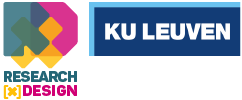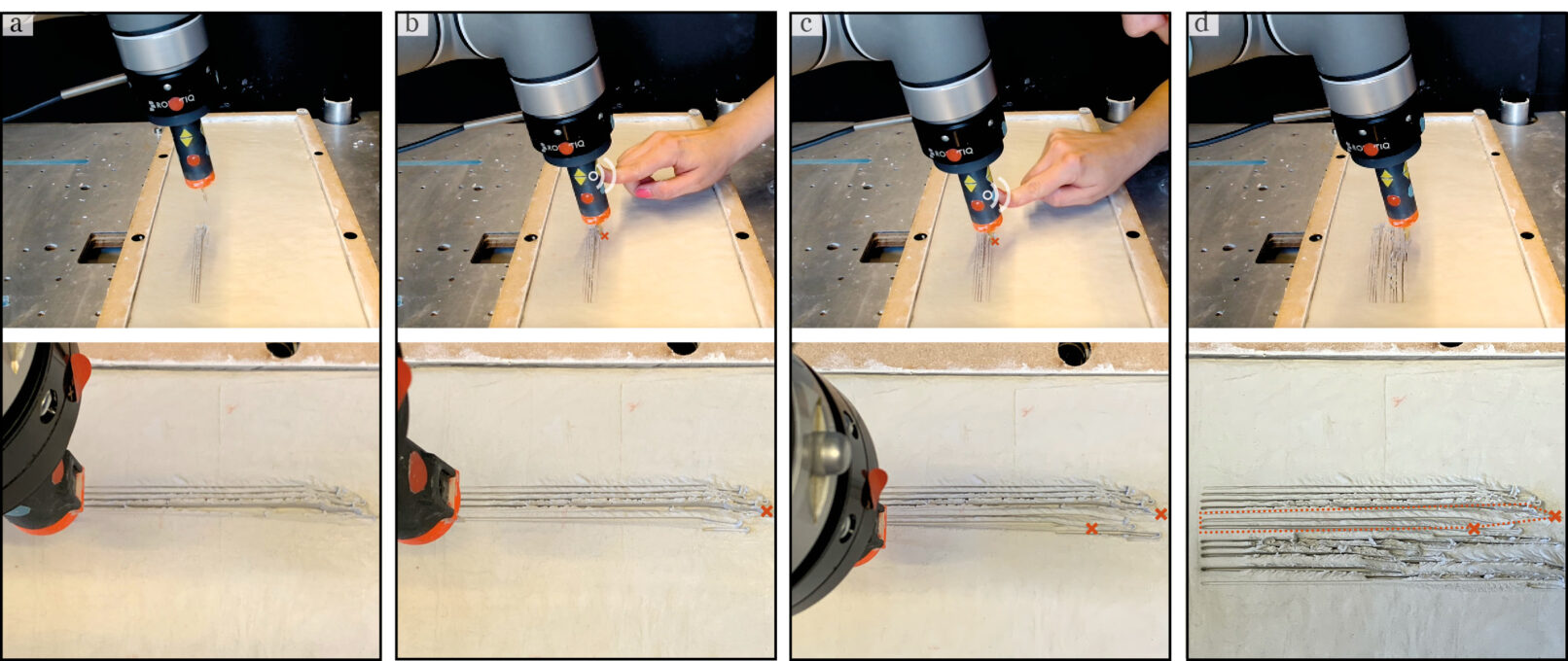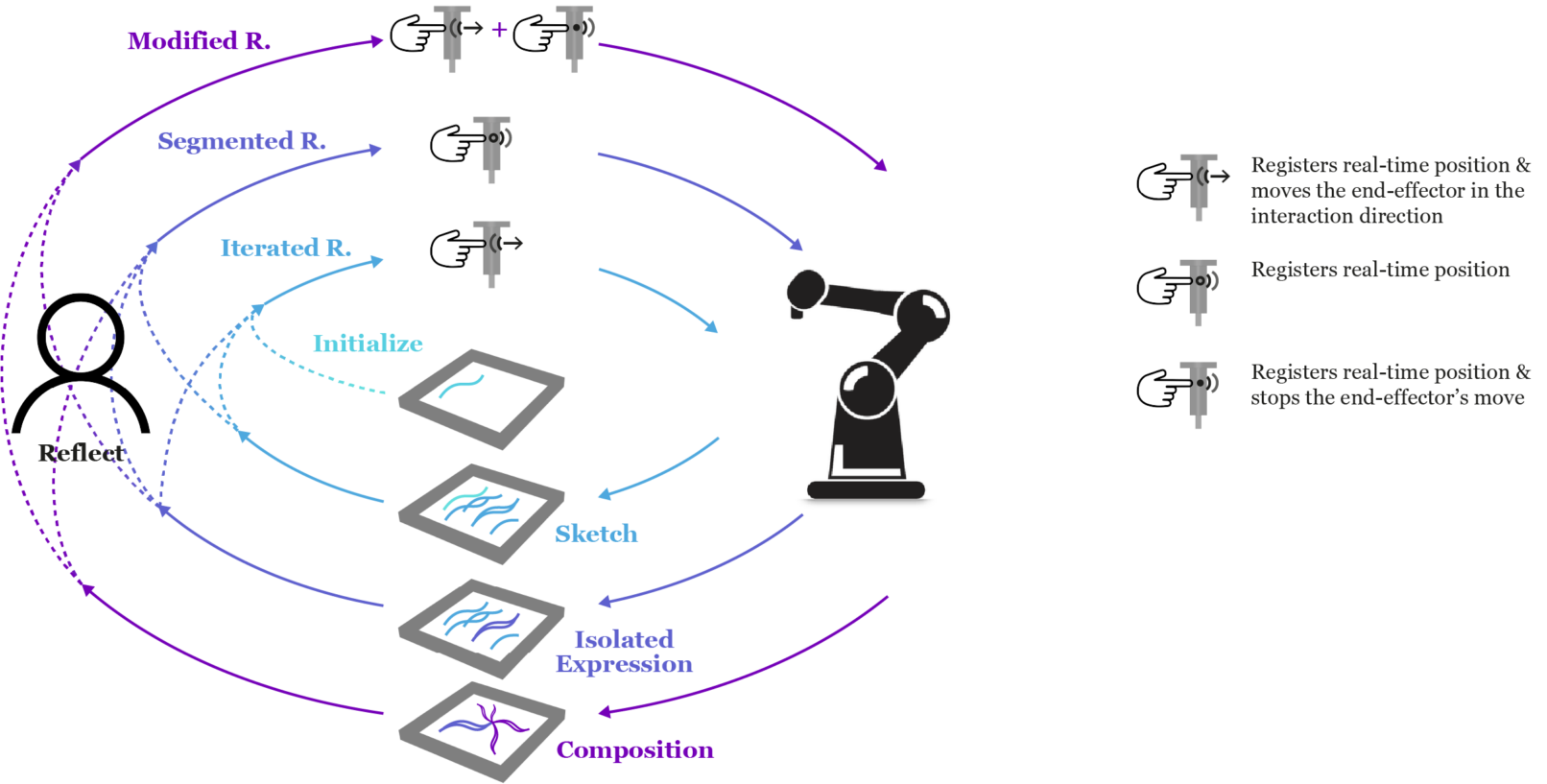Craft-Inspired Robotic Fabrication Makes Intricate Material Expressions that cannot be Digitally Modelled
How can digital fabrication support on-the-fly improvisation?
The prototypical digital fabrication workflow requires a linear design process, during which a digital design is modelled that is then superimposed on a material. Because this means that the design ideation finishes before the fabrication begins, this workflow misses the opportunity to incorporate more intricate material expressions that can only be discovered through the enactive and embodied process of making. Knowing that this first-person and gradual acquisition of making knowledge forms the cornerstone of craft, this study investigates how digital fabrication can gain more craft-like qualities by allowing material expressions to be similarly discovered, regenerated and mastered on-the-fly.
We thus developed an interactive craft-inspired fabrication framework that allows the continuous carving of clay to be controlled on-the-fly, solely via manually interacting with the robotic end-effector itself. Our results demonstrate that our approach allows intricate material expressions to serendipitously appear, which in turn inspire new design ideas to form and gradually develop. Accordingly, our contributions include: 1) a new enactive and embodied interaction modality that continuously regenerates a self-similar fabrication action sequence so that its design space can be gradually learned; 2) an iterative workflow that supports on-the-fly design ideation by sequentially sketching, isolating, and composing an intricate material expression; and 3) a collection of critical considerations that propose how our findings could help integrate more improvisation, serendipity and reflection in digital fabrication.
Publication
Iremnur Tokac, Benay Guroy, Herman Bruyninckx and Andrew Vande Moere. 2022. Craft-Inspired Digital Fabrication: A Study of Interactive Robotic Clay Carving. In Symposium on Computational Fabrication (SCF ’22), October 26–28, 2022 (Seattle, US) 14 pages.





